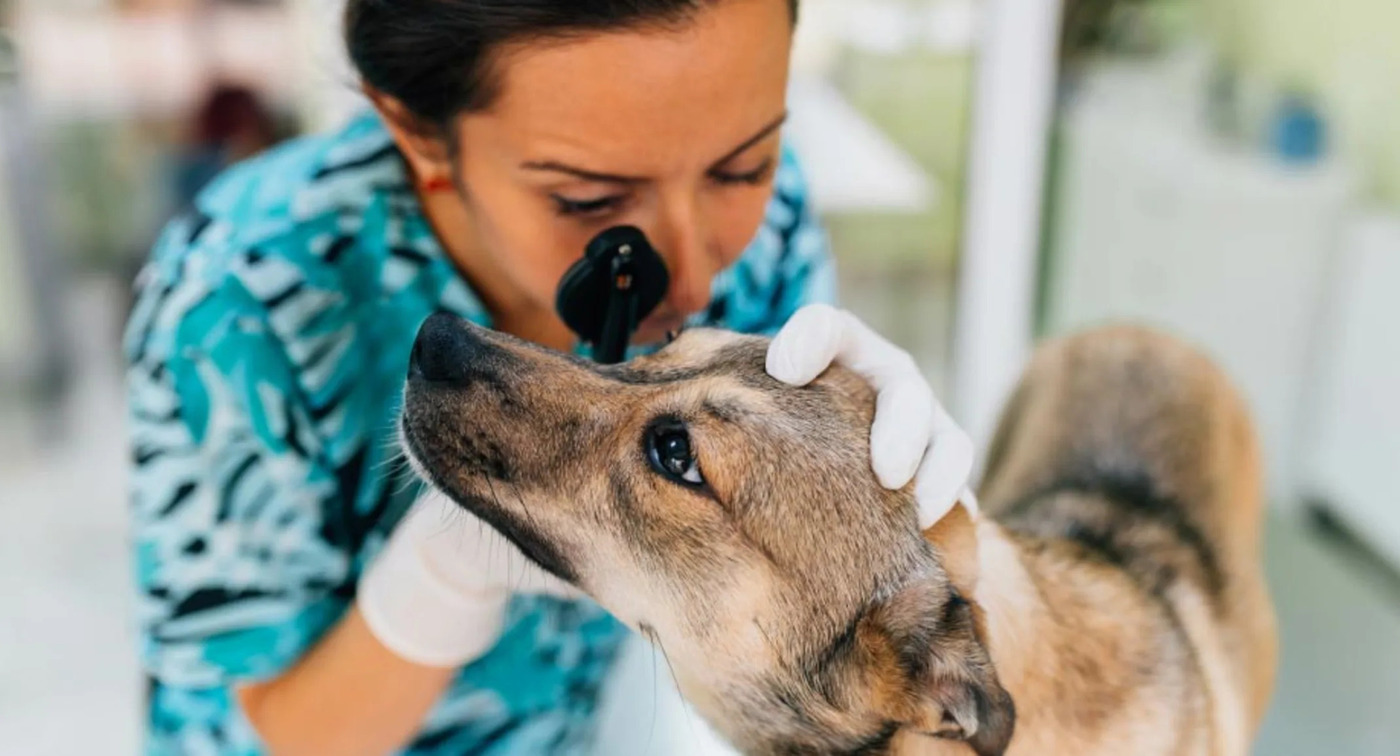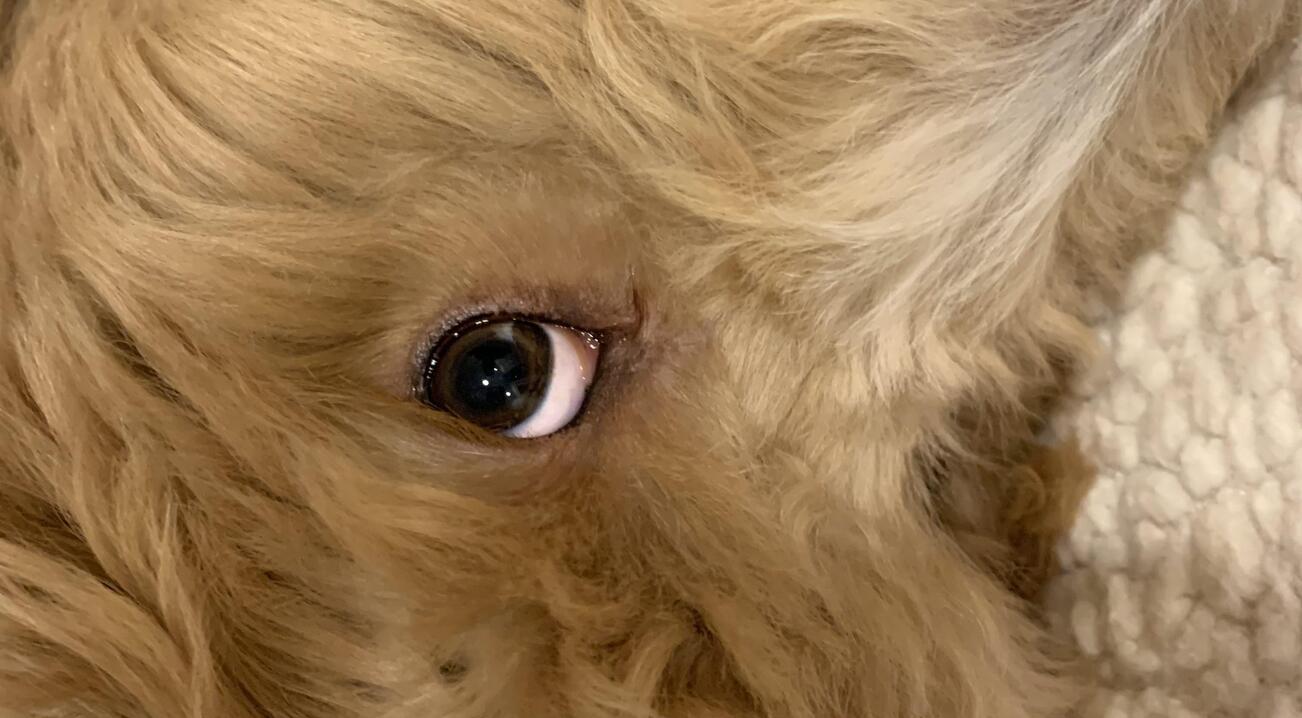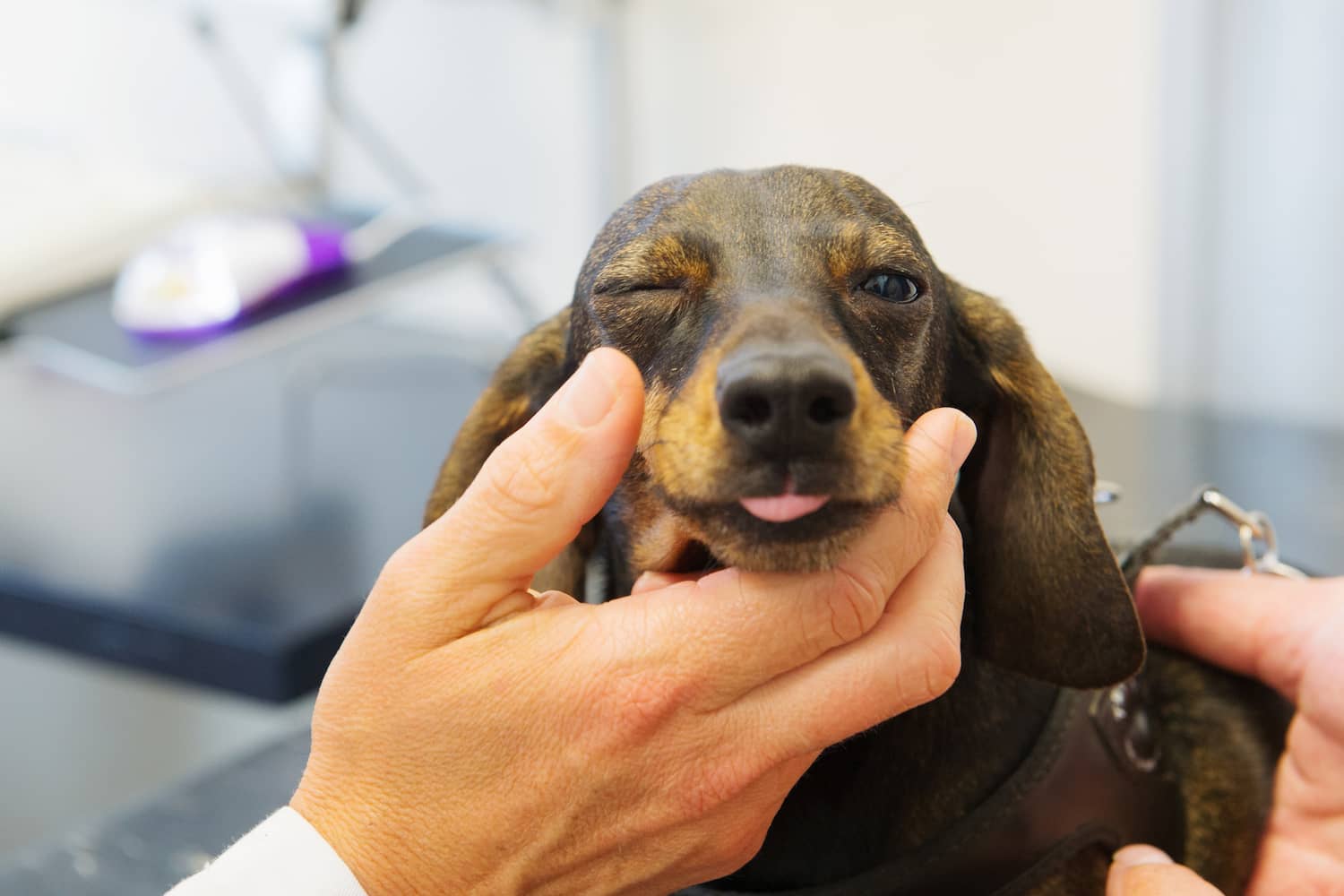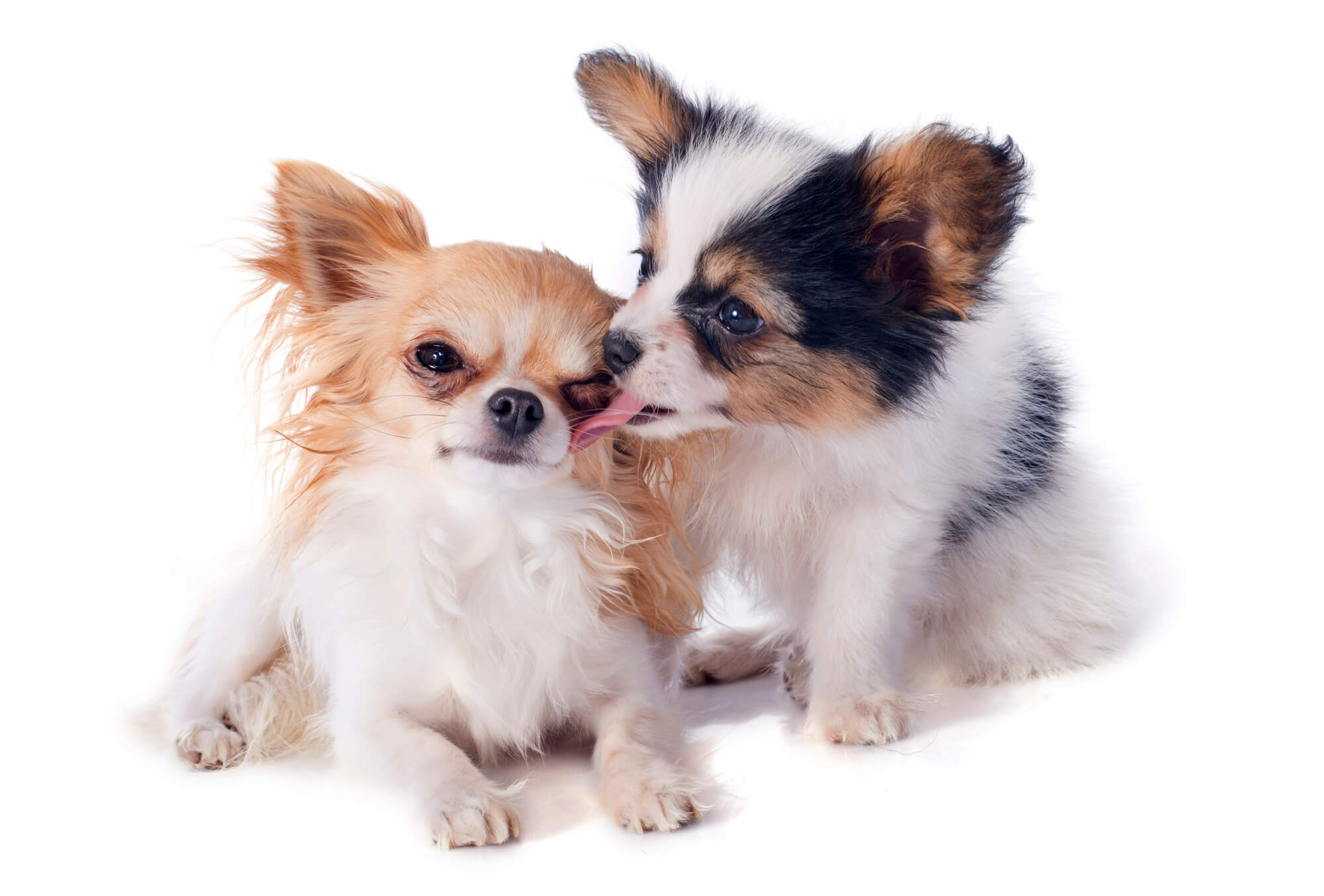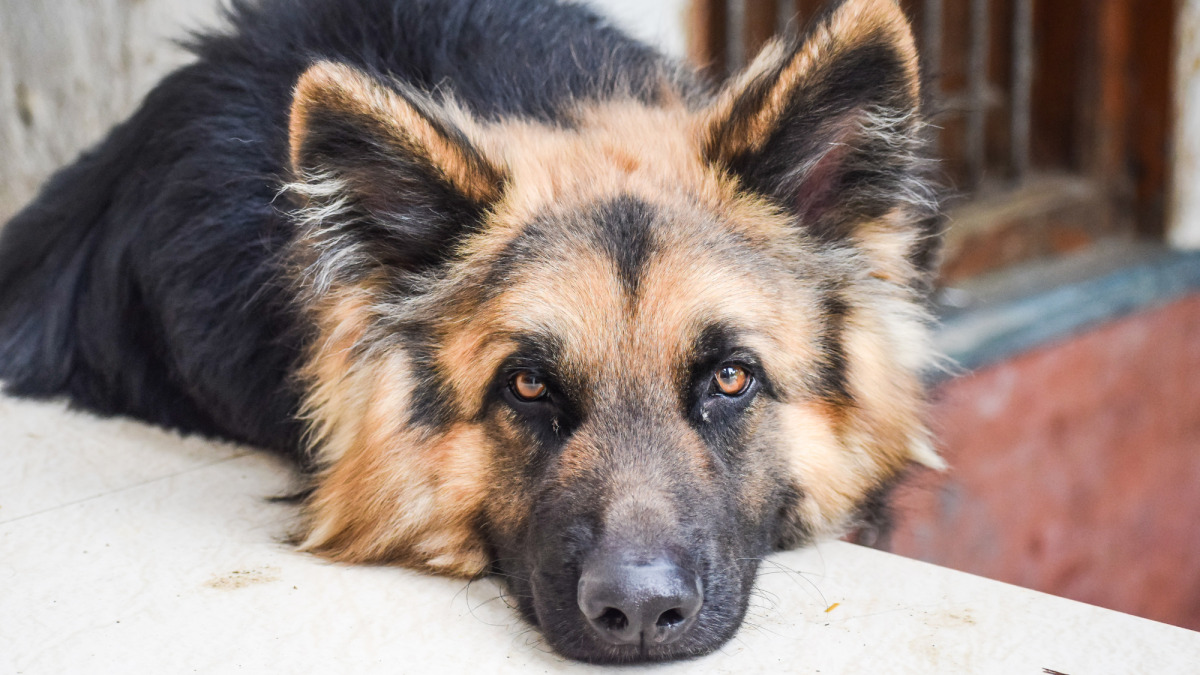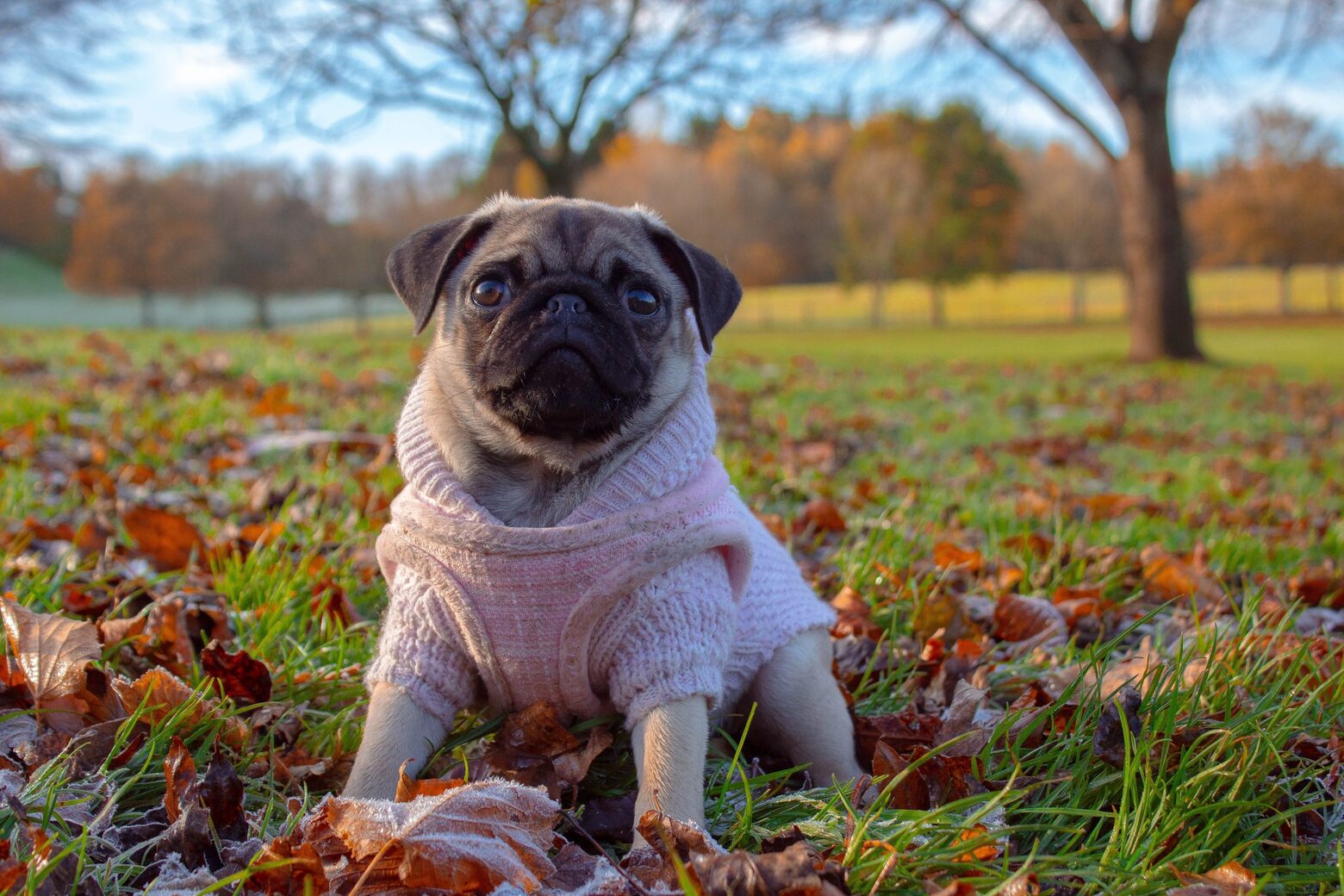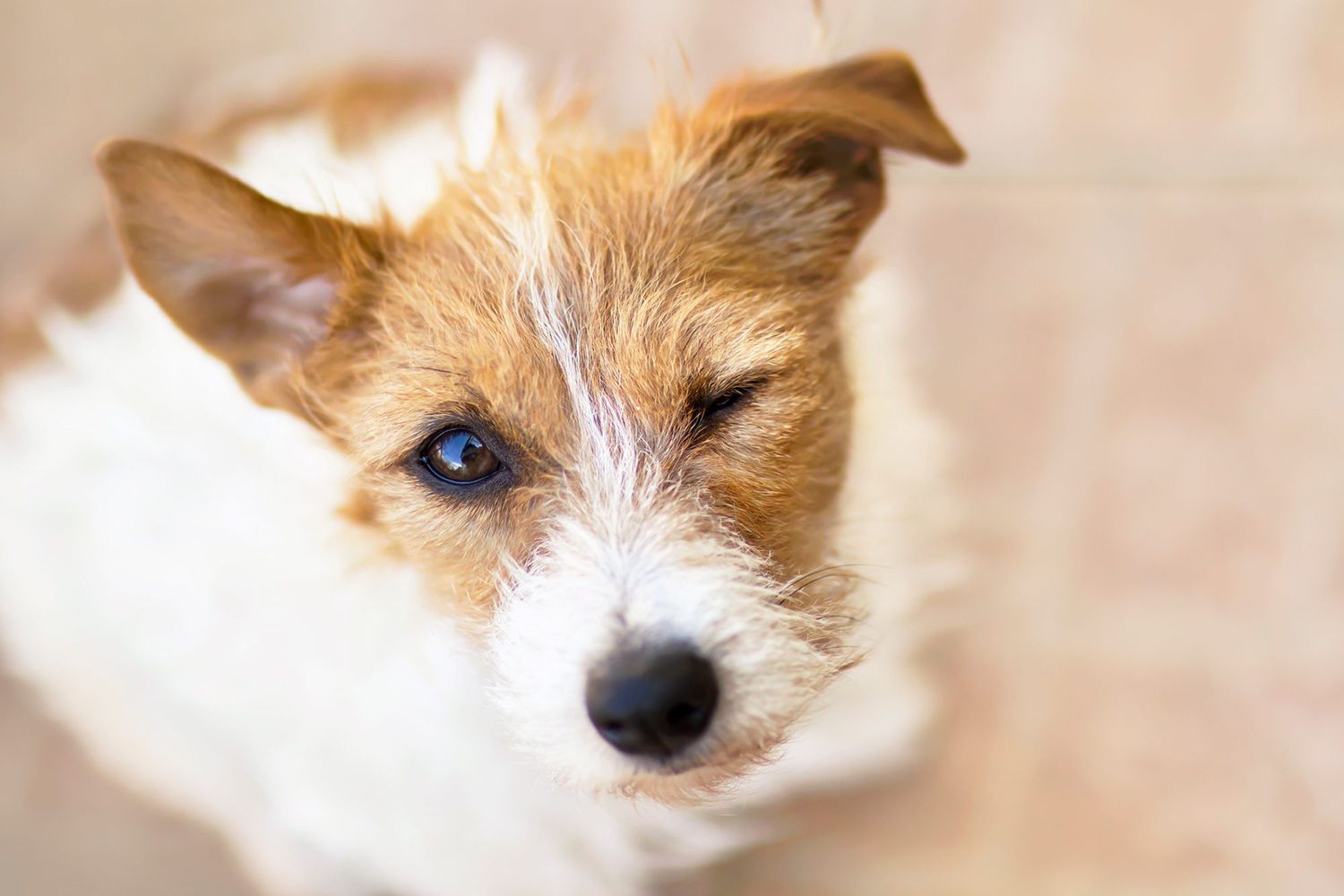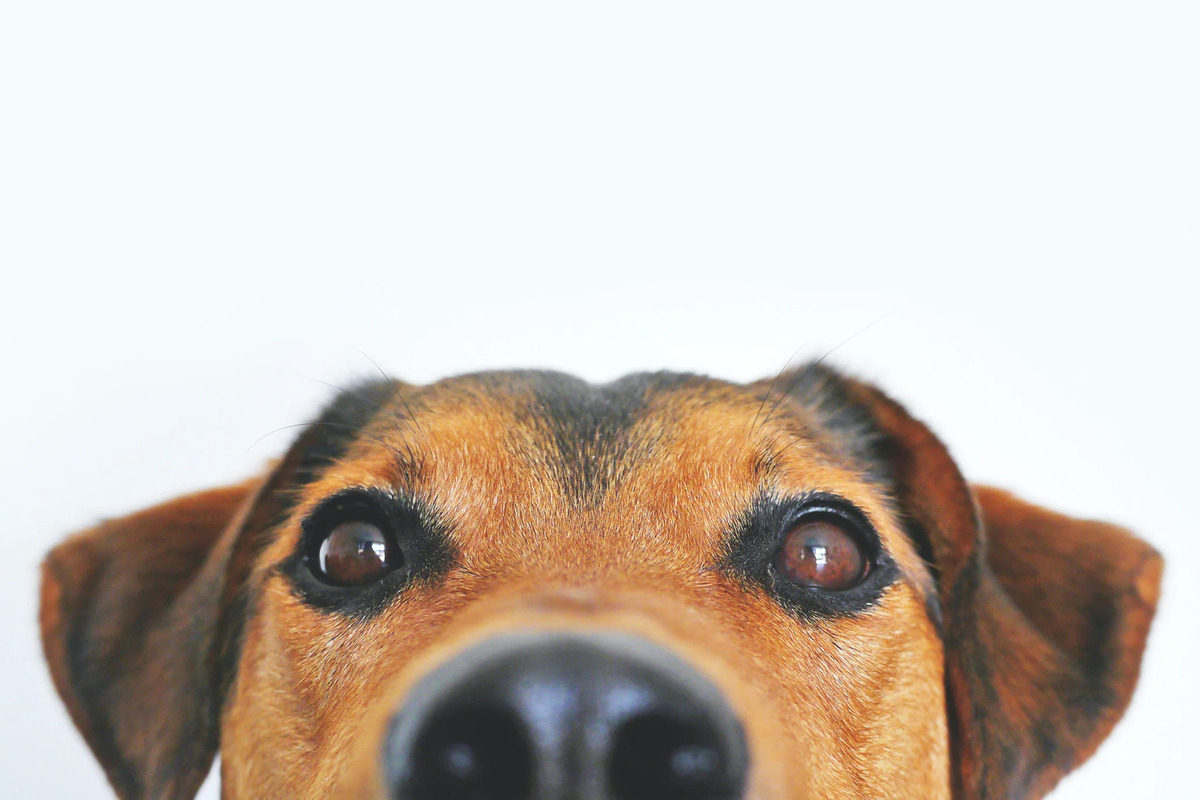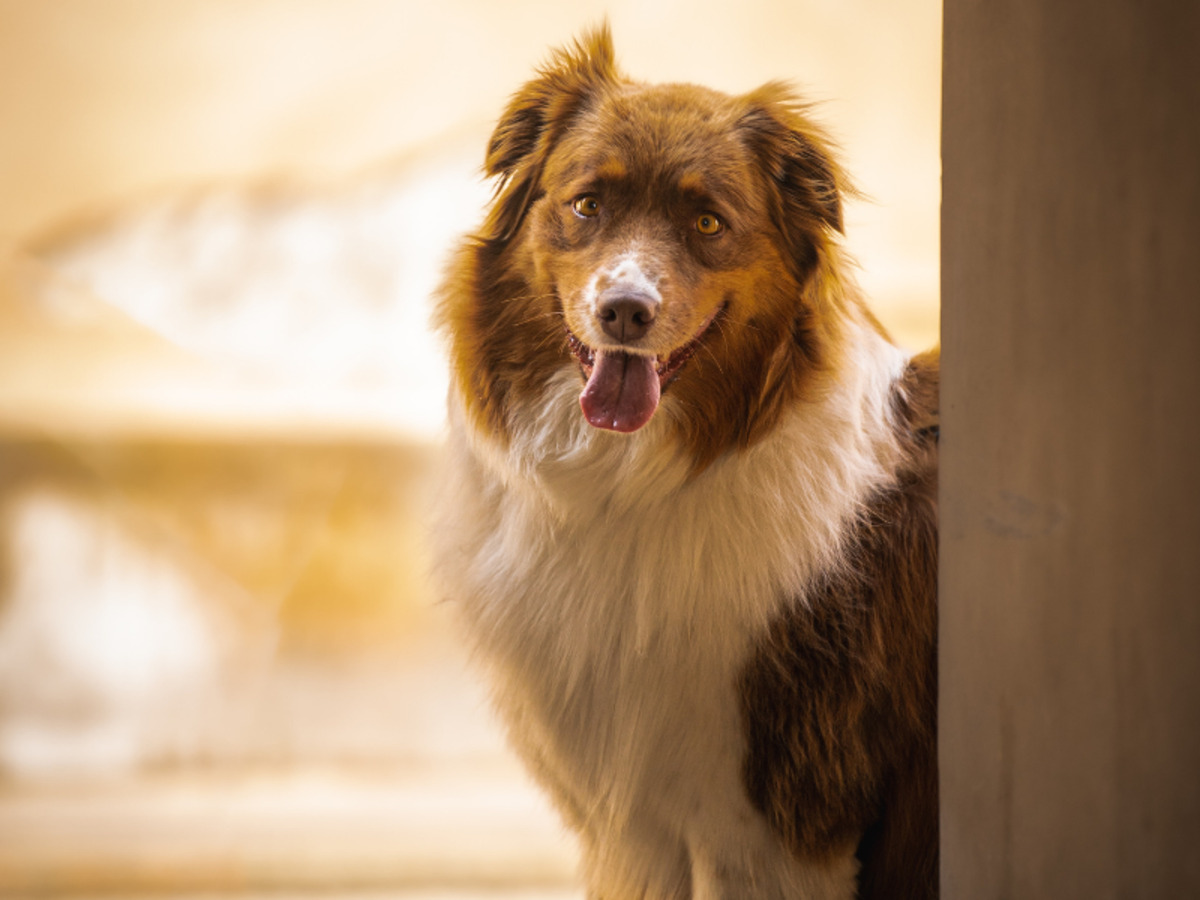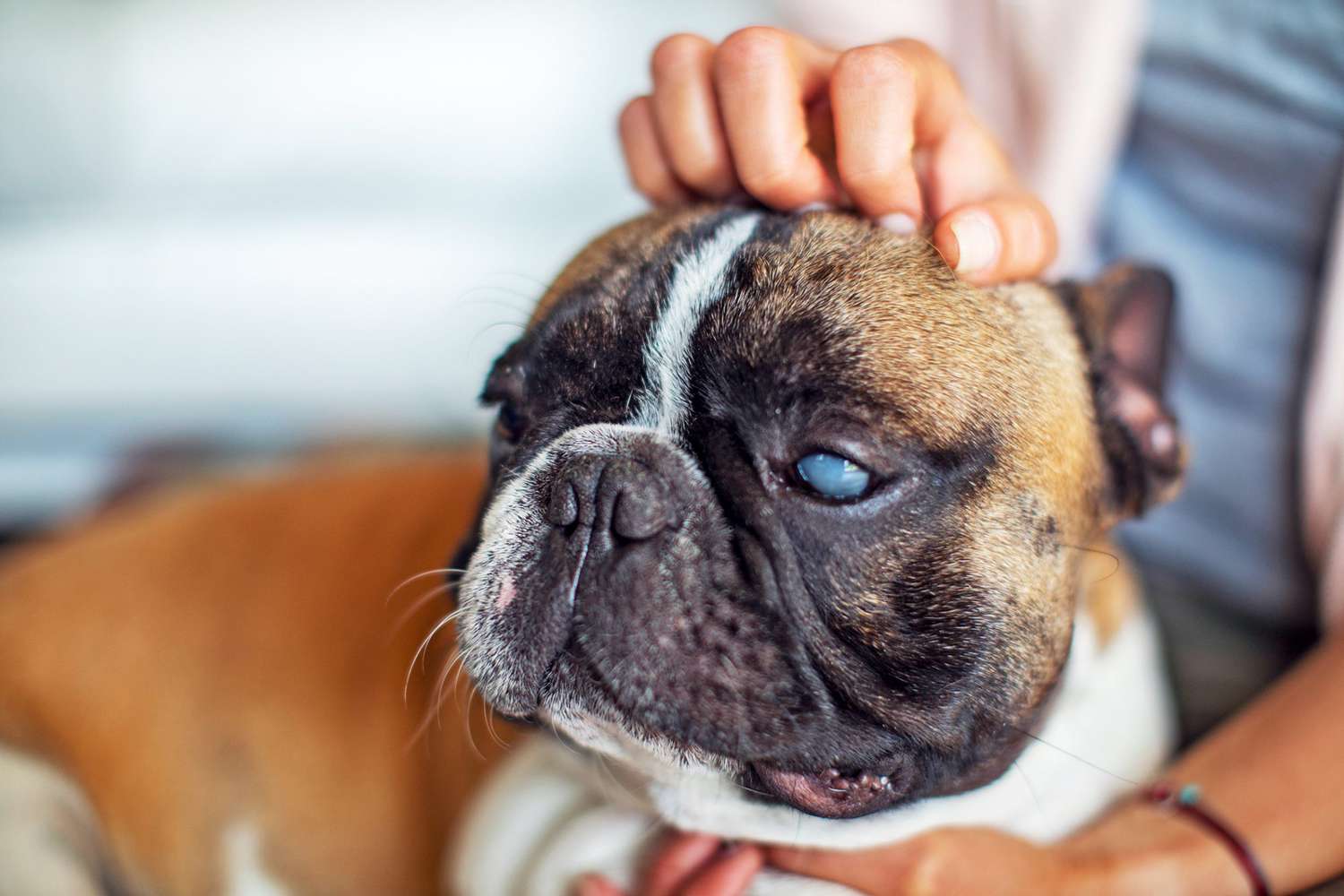Home>Health & Wellness>Common Health Issues>Eye and Ear Health>Why Does Dog’s Eye Color Change
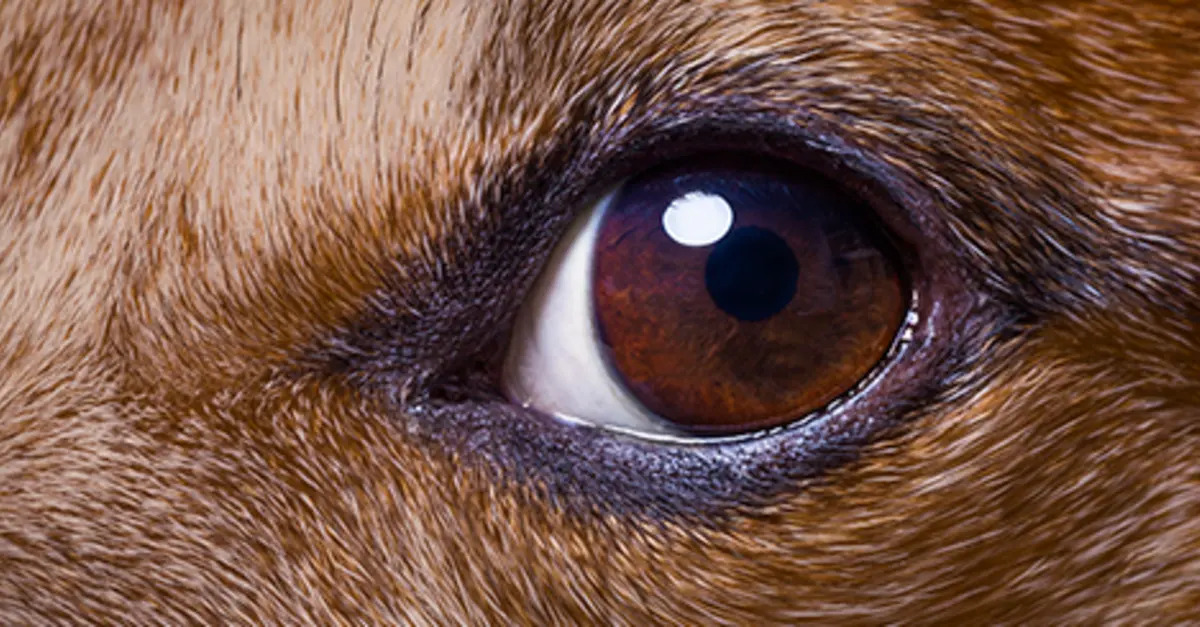

Eye and Ear Health
Why Does Dog’s Eye Color Change
Published: February 11, 2024
Learn why a dog's eye color changes and how it relates to their overall eye and ear health. Understand the factors that can impact your dog's eye color and what it means for their well-being.
(Many of the links in this article redirect to a specific reviewed product. Your purchase of these products through affiliate links helps to generate commission for Pawsomeoldies.com, at no extra cost. Learn more)
Table of Contents
Introduction
The mesmerizing gaze of a dog can captivate anyone's heart, and the color of their eyes adds to their unique charm. Have you ever noticed your furry friend's eye color change and wondered why it happens? Understanding the reasons behind these captivating shifts can provide valuable insights into your dog's health and well-being.
In this article, we will delve into the fascinating world of dog eye color changes, exploring the science behind these transformations and the factors that influence them. By shedding light on common eye color changes in dogs and when to be vigilant about these alterations, we aim to equip you with the knowledge to better understand and care for your canine companion.
Let's embark on a journey to unravel the mysteries of canine eye color changes, gaining a deeper appreciation for the intricate beauty of our loyal four-legged friends.
Read more: What Is The Rarest Eye Color In Dogs
The Science Behind Eye Color
The captivating array of eye colors in dogs, ranging from deep brown to striking blue, is a result of intricate biological processes. At the core of this phenomenon lies the presence of melanin, a pigment responsible for the coloration of the eyes, skin, and fur in dogs.
The amount and distribution of melanin within the iris determine the eye color of a dog. In general, a higher concentration of melanin results in darker eye colors, such as brown, while lower levels lead to lighter hues, including blue or green. This process is akin to the mechanisms that govern human eye coloration.
During a dog's early development, the production and distribution of melanin within the iris undergo a complex interplay of genetic and environmental factors. Genes inherited from the parents play a pivotal role in determining the baseline level of melanin, which sets the stage for the eventual eye color. Additionally, environmental influences, such as exposure to sunlight and aging, can further shape and modify the eye color over time.
The fascinating aspect of eye color changes in dogs lies in the potential for shifts in melanin production and distribution as they mature. This can lead to alterations in eye color, transforming a puppy's bright blue eyes into a rich amber hue as they grow into adulthood. These changes are a testament to the dynamic nature of biological processes and the intricate interplay of genetics and environmental factors.
Furthermore, certain breeds are predisposed to specific eye colors due to their genetic makeup. For instance, Siberian Huskies are renowned for their striking blue eyes, a trait that sets them apart within the canine world. This breed-specific characteristic highlights the influence of genetics on eye color and adds to the allure of the diverse eye colors found in dogs.
In essence, the science behind eye color in dogs is a captivating blend of genetic predispositions and environmental influences, resulting in a mesmerizing spectrum of hues that reflect the unique beauty of each canine individual. Understanding these underlying mechanisms provides a deeper appreciation for the captivating kaleidoscope of eye colors found in our beloved furry companions.
Factors that Influence Eye Color Change in Dogs
The mesmerizing array of eye colors in dogs is not only a result of genetic predispositions but also influenced by a myriad of factors that contribute to eye color changes throughout a dog's life. Understanding these influential elements sheds light on the dynamic nature of canine eye coloration and provides valuable insights into the fascinating transformations that captivate dog owners worldwide.
Genetic Predispositions:
Genetic factors play a pivotal role in determining a dog's baseline eye color. The genes inherited from the parents set the stage for the initial eye color, laying the foundation for potential shifts as the dog matures. Certain breeds are known for specific eye colors due to their genetic makeup, showcasing the profound influence of genetics on eye coloration.
Age and Development:
During a dog's early stages of life, the eye color may undergo significant changes as they mature. Puppies are often born with blue eyes, which can gradually transition to their adult eye color as they grow. This transformation is attributed to the development and distribution of melanin within the iris, reflecting the intricate interplay of biological processes and growth.
Read more: Why Does My Dog Have A Bump By Her Eye
Environmental Influences:
External factors, such as exposure to sunlight, can impact a dog's eye color over time. Sunlight can stimulate the production and distribution of melanin, potentially leading to shifts in eye coloration. Additionally, aging can also contribute to changes in eye color, as the biological processes governing melanin production and distribution evolve with time.
Health and Wellness:
The overall health and wellness of a dog can influence their eye color. Certain health conditions or medications may indirectly impact the production and distribution of melanin, potentially leading to alterations in eye color. Monitoring a dog's eye color can provide valuable insights into their health, serving as a visual indicator of potential underlying health concerns.
Unique Breed Characteristics:
Certain dog breeds exhibit distinct eye color characteristics, reflecting the breed-specific traits inherited through generations. For example, the captivating blue eyes of Siberian Huskies are a hallmark of this breed, showcasing the breed-specific influence on eye coloration. Understanding these unique breed characteristics adds to the allure of the diverse eye colors found in dogs.
In essence, the factors that influence eye color change in dogs encompass a complex interplay of genetic predispositions, age and development, environmental influences, health and wellness, and unique breed characteristics. By unraveling the intricate web of influences shaping canine eye coloration, we gain a deeper appreciation for the dynamic nature of eye color changes in our beloved furry companions.
Common Eye Color Changes in Dogs
The mesmerizing kaleidoscope of eye colors found in dogs encompasses a spectrum of captivating hues that can undergo intriguing transformations throughout a dog's life. Understanding the common eye color changes in dogs provides valuable insights into the dynamic nature of canine eye coloration and the factors that contribute to these captivating shifts.
Read more: Why Does My Dog’s Eye Reflect?
Puppies: The Journey of Eye Color
Puppies often enter the world with enchanting blue eyes, a sight that tugs at the heartstrings of dog lovers worldwide. However, this initial eye color is not indicative of their eventual adult eye color. As puppies mature, the development and distribution of melanin within their iris undergo a fascinating transformation, leading to potential shifts in eye color. This journey from bright blue to their adult eye color is a testament to the intricate biological processes at play, reflecting the dynamic nature of eye color changes in dogs.
Transition to Adult Eye Color
As puppies grow and mature, their eye color may gradually transition from the initial blue hue to their adult eye color. This transition is a result of the evolving melanin production and distribution within the iris, influenced by genetic predispositions, age, and environmental factors. The gradual shift in eye color reflects the captivating interplay of biological processes, culminating in the emergence of the dog's unique adult eye color.
Breed-Specific Eye Color Characteristics
Certain dog breeds are renowned for their distinct eye color characteristics, adding to the captivating diversity of canine eye colors. For example, Siberian Huskies are celebrated for their striking blue eyes, a breed-specific trait that sets them apart within the canine world. This breed-specific influence on eye coloration highlights the captivating array of eye colors found in dogs and the unique breed characteristics that contribute to their mesmerizing gaze.
Aging and Eye Color Changes
As dogs age, their eye color may undergo subtle changes, reflecting the dynamic nature of eye coloration. The aging process can impact the production and distribution of melanin within the iris, potentially leading to alterations in eye color. These age-related changes add to the intriguing narrative of canine eye color transformations, showcasing the evolving beauty of a dog's gaze as they journey through different stages of life.
In essence, the common eye color changes in dogs encompass a captivating journey from puppyhood to adulthood, influenced by genetic predispositions, breed-specific traits, and the dynamic interplay of biological processes. By unraveling these common eye color changes, we gain a deeper appreciation for the mesmerizing kaleidoscope of eye colors found in our beloved furry companions.
Read more: Why Does My Dog Have One Dilated Eye?
When to Be Concerned about Eye Color Changes
The captivating kaleidoscope of eye colors in dogs can undergo intriguing transformations throughout their lives, reflecting the dynamic nature of canine eye coloration. While many eye color changes are a natural part of a dog's development, certain alterations may warrant closer attention and concern from pet owners. Understanding when to be vigilant about eye color changes empowers dog owners to monitor their furry companions' ocular health effectively.
Unexplained or Sudden Changes
Sudden or unexplained shifts in a dog's eye color should prompt pet owners to seek veterinary evaluation. Abrupt alterations in eye color, especially in adult dogs, can indicate underlying health issues that require professional assessment. These changes may be indicative of ocular conditions or systemic health concerns that necessitate timely intervention.
Cloudiness or Discoloration
The presence of cloudiness or discoloration in a dog's eyes warrants immediate attention. Cloudy or discolored eyes can signal the presence of cataracts, corneal ulcers, or other ocular abnormalities that can impact a dog's vision and overall well-being. Pet owners should prioritize seeking veterinary care to address these concerning changes and ensure the preservation of their dog's ocular health.
Persistent Redness or Irritation
Persistent redness or irritation in a dog's eyes can be a cause for concern. These symptoms may indicate underlying ocular conditions, such as conjunctivitis or glaucoma, that require prompt diagnosis and treatment. Monitoring a dog's eye color and assessing any signs of redness or irritation can aid in early detection and intervention, safeguarding their ocular health.
Read more: Why Does My Dog Have A Lazy Eye
Behavioral Changes
Changes in a dog's behavior, such as increased sensitivity to light or reluctance to engage in activities that involve visual stimuli, alongside noticeable alterations in eye color, should raise concerns. These behavioral changes may be linked to ocular discomfort or vision-related issues, necessitating thorough evaluation by a veterinary professional to address any underlying concerns.
Gradual or Progressive Changes
While gradual shifts in eye color are often a natural part of a dog's development, pet owners should remain vigilant if these changes occur progressively over time. Monitoring the pace and nature of these alterations can provide valuable insights into potential underlying health issues, prompting timely veterinary assessment and intervention if necessary.
In essence, being attentive to unexplained or sudden changes, cloudiness or discoloration, persistent redness or irritation, behavioral changes, and gradual or progressive alterations in a dog's eye color empowers pet owners to prioritize their furry companions' ocular health. By recognizing when to be concerned about eye color changes, dog owners can take proactive steps to ensure the well-being and visual health of their beloved canine companions.
Conclusion
The captivating journey through the intricate world of canine eye color changes unveils a tapestry of biological marvels, genetic predispositions, and environmental influences that shape the mesmerizing kaleidoscope of eye colors found in dogs. From the enchanting blue eyes of puppies to the striking hues that define specific breeds, the dynamic nature of eye coloration reflects the unique beauty and individuality of each canine companion.
Understanding the science behind eye color in dogs provides a deeper appreciation for the complex interplay of genetic predispositions and environmental factors that contribute to the captivating shifts in eye color. The presence of melanin, the pigment responsible for eye coloration, serves as a testament to the intricate biological processes that govern the mesmerizing array of eye colors found in dogs.
Factors such as genetic predispositions, age and development, environmental influences, health and wellness, and unique breed characteristics collectively influence the dynamic nature of eye color changes in dogs. These influential elements shape the captivating journey from puppyhood to adulthood, unveiling the evolving beauty of a dog's gaze as they mature and grow.
While many eye color changes are a natural part of a dog's development, pet owners must remain vigilant about concerning alterations that may indicate underlying health issues. Unexplained or sudden changes, cloudiness or discoloration, persistent redness or irritation, behavioral changes, and gradual or progressive alterations in eye color warrant closer attention and prompt veterinary evaluation to safeguard a dog's ocular health.
In essence, the captivating world of canine eye color changes serves as a testament to the intricate beauty and dynamic nature of our beloved furry companions. By unraveling the mysteries of eye coloration in dogs, we gain a deeper understanding of their visual health and well-being, fostering a deeper bond with these loyal and enchanting creatures who grace our lives with their captivating gaze.
